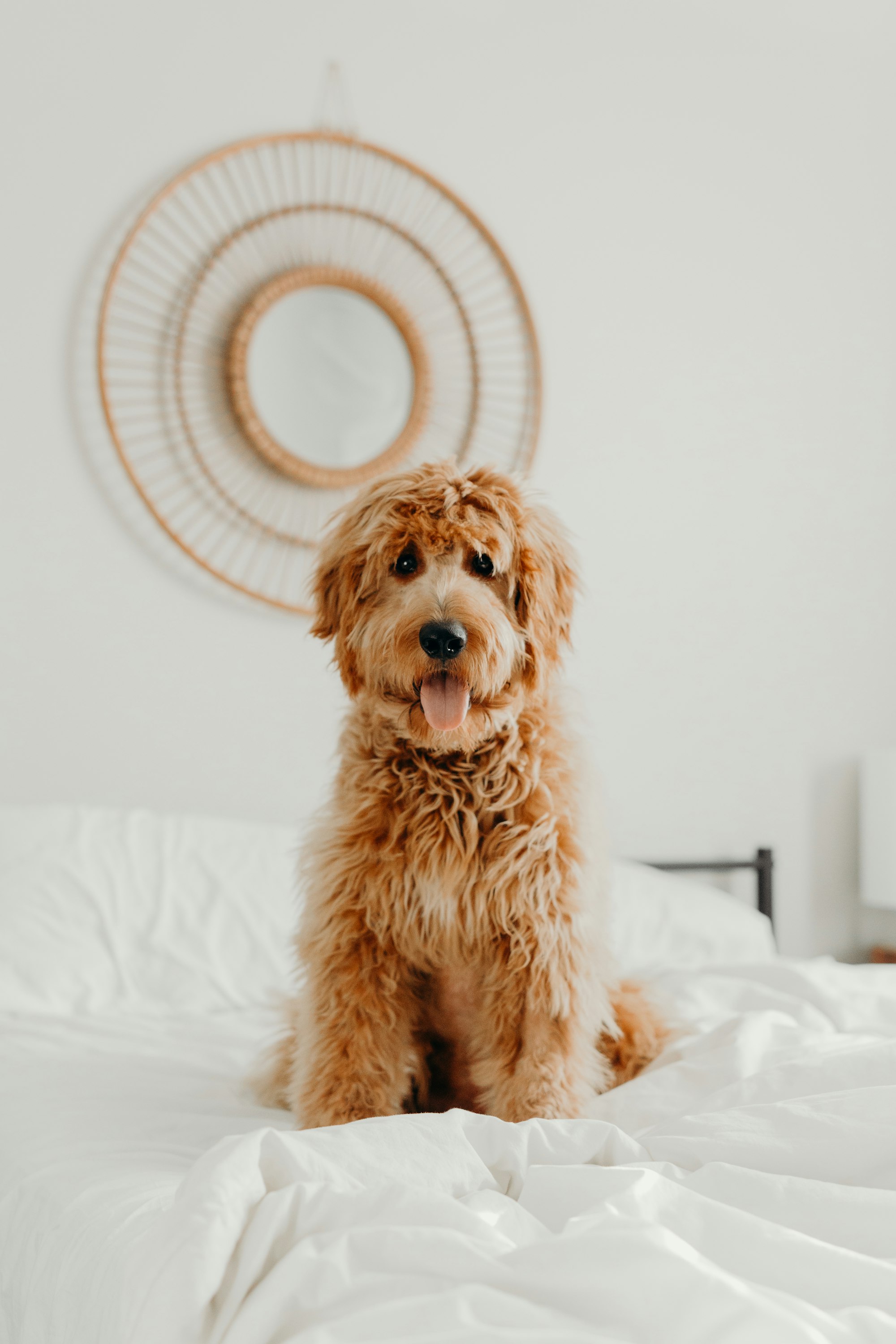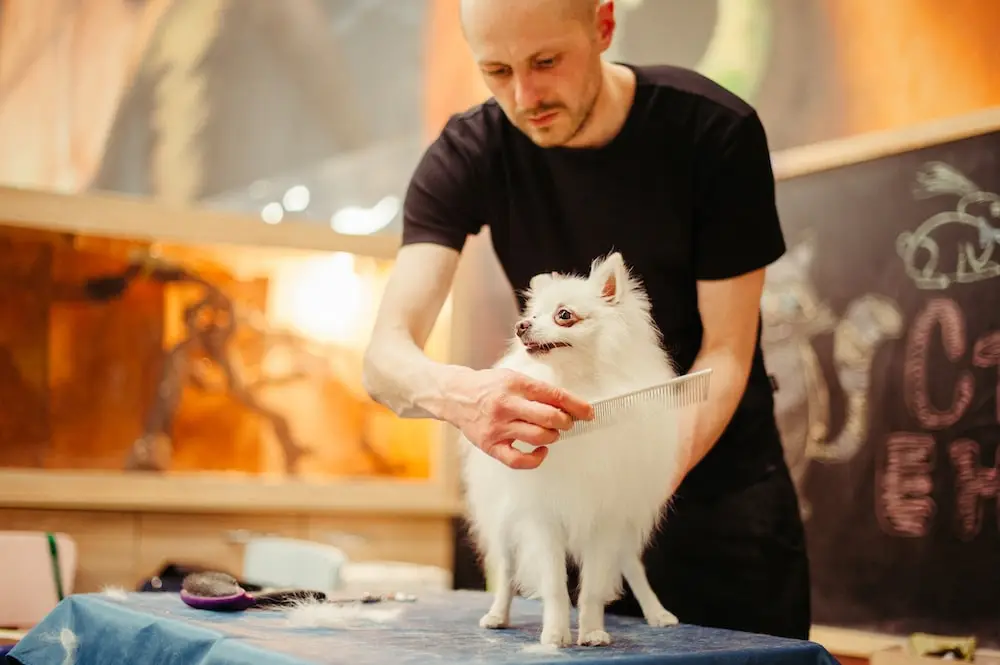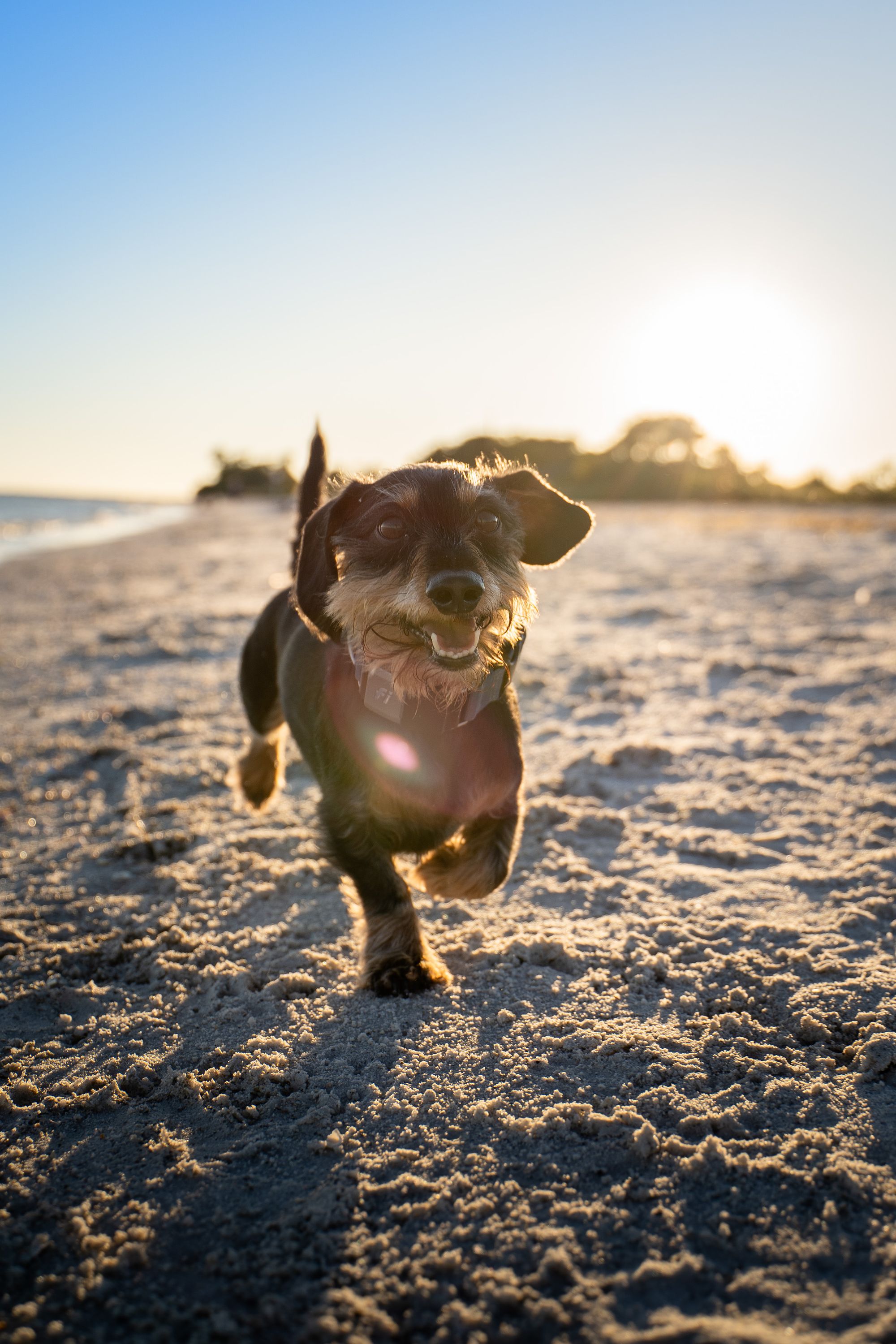Having your dog sit down after grooming can be concerning for pet owners. There can be several reasons why your dog exhibits this behavior, and it's important to understand them to address the issue effectively.
If your dog keeps sitting down after grooming, there are several steps you can take. Start by monitoring your dog's behavior and checking for any signs of physical discomfort. You can also consider using gentle grooming products and providing support and comfort to help ease any discomfort. If the behavior persists or is accompanied by other concerning symptoms, consult a veterinarian for further guidance.
To prevent dogs from sitting down after grooming, it's important to create a comfortable grooming environment, gradually introduce grooming to your dog, familiarize them with grooming tools, take breaks during grooming sessions, and reward and reinforce positive behavior. By following these tips, you can help ensure a positive grooming experience for your furry friend.

Key takeaway:
- Discomfort or Pain: One possible reason why your dog keeps sitting down after grooming is that it may be experiencing discomfort or pain. It's important to monitor their behavior and check for any signs of physical discomfort.
- Sensitivity to Grooming Products: Another reason could be that your dog is sensitive to the grooming products being used. Using gentle grooming products can help prevent any adverse reactions and discomfort.
- Anxiety or Stress: Dogs may sit down after grooming due to anxiety or stress. Creating a comfortable grooming environment and gradually introducing grooming sessions can help reduce their anxiety levels.
Why is My Dog Sitting Down After Grooming?
After grooming, you may wonder why your dog is sitting down. There are a few possible reasons for this behavior. Firstly, grooming can be exhausting for dogs, especially if it involves extensive brushing, bathing, or trimming. Sitting down allows them to rest and regain their energy. Secondly, sitting down after grooming may indicate discomfort or pain. This could be due to a tight collar, irritation from grooming products, or even a small cut or injury during the process. It's crucial to inspect your dog's body for any signs of discomfort or injury. Some dogs simply prefer to sit down after grooming because they feel relaxed and comfortable.
To address this issue, it's important to ensure that your dog's grooming experience is as comfortable as possible. Use gentle grooming techniques and products that are suitable for your dog's skin and coat. Check their collar for any tightness or irritation. After grooming, provide your dog with a cozy and quiet space where they can relax and feel at ease. If you notice any signs of discomfort or persistent sitting, it's best to consult with a veterinarian to rule out any underlying health issues or injuries.
Pro-tip: To make grooming a positive experience for your dog, introduce it gradually and use positive reinforcement techniques such as treats and praise. This will help your dog associate grooming with pleasant experiences and reduce the chances of post-grooming discomfort or stress.
Possible Reasons for Dogs Sitting Down After Grooming
After giving your dog a fresh groom, you may notice that they have a peculiar habit of sitting down. Wondering why this happens? Let's explore the possible reasons behind this curious behavior. From discomfort or pain to sensitivity to grooming products, anxiety or stress, and even fatigue or muscle soreness, we'll unravel the different factors that could be causing your furry friend to assume the sitting position. Stay tuned to uncover the mysteries behind your dog's post-grooming seat!
1. Discomfort or Pain
If your dog keeps sitting down after grooming, it could be due to discomfort or pain. Here are some potential causes and solutions to consider:
- Improper handling: If your dog was handled roughly or in an uncomfortable position during grooming, it may experience discomfort or pain.
- Tangling or matting: If your dog's fur is tangled or matted, the grooming process can cause pulling or tugging, resulting in discomfort.
- Skin irritation: Grooming products or tools may irritate your dog's skin, causing discomfort or pain.
- Underlying health issues: Your dog may have an underlying health condition like arthritis or muscle stiffness, causing discomfort or pain.
To address any discomfort or pain, you can take the following steps:
- Ensure gentle handling during grooming sessions to minimize any discomfort.
- Regularly brush and detangle your dog's fur to prevent matting and reduce pulling during grooming.
- Use grooming products specifically formulated for sensitive skin.
- Provide support and comfort to your dog during and after grooming by using soft towels or mats.
- If the discomfort or pain persists, it is important to consult a veterinarian for a thorough evaluation and appropriate treatment.
By addressing any discomfort or pain during grooming, you can help your dog have a more enjoyable and comfortable experience.
2. Sensitivity to Grooming Products
When dogs sit down after grooming, it could be due to sensitivity to grooming products. Here are some factors to consider:
- Use of grooming products containing harsh chemicals: Some grooming products may irritate a dog's skin due to the presence of harsh chemicals. It is important to select grooming products that are gentle and specifically formulated for dogs to prevent any discomfort.
- Allergies to grooming products: Certain grooming products like shampoos or conditioners can trigger allergies in dogs. These allergies may cause discomfort and itching, leading the dog to sit down in an attempt to alleviate the irritation.
- Skin sensitivity: Some dogs have inherently sensitive skin, and certain grooming products can cause discomfort or a reaction. It is crucial to choose hypoallergenic products that are suitable for dogs with sensitive skin to avoid any adverse reactions.
- Inadequate rinsing: If grooming products are not thoroughly rinsed off during the grooming process, residue may linger on the dog's skin, causing discomfort and prompting the dog to sit down.
- Unpleasant scent: Strong fragrances in grooming products can overwhelm dogs, causing them to exhibit behaviors like sitting down to avoid the overpowering scent.
If your dog keeps sitting down after grooming, it is recommended to switch to gentler grooming products and observe their behavior. If the issue persists or worsens, it is advised to consult a veterinarian.
3. Anxiety or Stress
When dogs sit down after grooming, it may be due to anxiety or stress. Here are some possible reasons and what you can do to help:
- Unfamiliar environment: Dogs may feel anxious or stressed in unfamiliar grooming environments. Make sure to choose a comfortable and familiar place for grooming sessions.
- Previous negative experiences: If your dog has had a negative grooming experience in the past, it may develop anxiety or stress. Gradually introduce grooming sessions and create positive associations with the process.
- Loud noises or strong scents: Dogs have sensitive senses and loud noises or strong scents in the grooming area can trigger anxiety. Keep the environment calm and quiet during grooming sessions.
- Handling or restraint: Some dogs may become anxious or stressed when they are being handled or restrained during grooming. Familiarize your dog with grooming tools and techniques to reduce their anxiety.
- Overwhelming grooming procedures: If grooming sessions are too long or intense, dogs can become overwhelmed and anxious. Take breaks during grooming sessions to allow your dog to relax and reduce their stress levels.

Remember, it is important to monitor your dog's behavior during grooming and consult a veterinarian if their anxiety or stress persists. By creating a calm and comfortable grooming environment and gradually introducing grooming, you can help alleviate your dog's anxiety or stress.
4. Fatigue or Muscle Soreness
In relation to dogs sitting down after grooming can be further understood by considering the following:
- Fatigue: Dogs may experience fatigue after a grooming session, particularly if it is lengthy or involves physically demanding activities such as trimming or nail clipping. The process of being handled and standing for an extended period can cause their muscles to tire.
- Muscle soreness: Dogs may also experience muscle soreness after grooming, especially if they are subjected to excessive restraint or uncomfortable positions during the process. This can lead to discomfort or pain, resulting in their desire to sit down.
To address the issue of fatigue or muscle soreness in dogs after grooming:
- Allow your dog to rest: Provide them with a quiet and comfortable space where they can relax and recover from the grooming session.
- Ensure adequate breaks during grooming: Take regular breaks during grooming sessions to allow your dog to stretch, move around, and relieve any muscle tension that may have developed.
- Use supportive surfaces: Place non-slip mats on grooming tables or surfaces to minimize discomfort and provide better support for your dog's muscles.
- Consider a shorter grooming session: If your dog tends to experience fatigue or muscle soreness, try breaking up the grooming process into shorter sessions spread out over time to avoid overexertion.
- Observe your dog's behavior: Monitor their movements and behavior closely after grooming. If they continue to exhibit signs of fatigue or muscle soreness, consult a veterinarian for further evaluation and guidance.
What to Do if Your Dog Keeps Sitting Down After Grooming
If your furry friend keeps plopping down immediately after a grooming session, don't panic! In this section, we'll explore some practical steps to address this peculiar behavior.
1. Monitor Your Dog's Behavior
When grooming your dog, it's important to monitor your dog's behavior closely during and after the grooming session to ensure their well-being and comfort. Observe your dog for any signs of discomfort or distress. Pay attention to any unusual behaviors, such as excessive panting, whining, or avoiding certain areas of their body. Additionally, watch for signs of pain like limping, flinching, or yelping when touched. Take note of any changes in their behavior, such as decreased energy levels or lack of appetite, as these could be indicators of underlying issues.
2. Check for Physical Discomfort
When your dog keeps sitting down after grooming, it's important to check for any physical discomfort they may be experiencing. Here are steps you can take to assess their well-being:

- Observe your dog's body language for signs of pain or discomfort, such as whining, yelping, or limping.
- Gently palpate your dog's body to check for any soreness, tenderness, or unusual lumps.
- Inspect their skin for redness, inflammation, or any signs of irritation that may be causing discomfort.
- Examine their paws and nails for any signs of injury or nail overgrowth that could be causing discomfort when standing.
- Check their ears for signs of infection or discomfort, such as redness, discharge, or excessive scratching.
It's important to remember that dogs may not always show obvious signs of discomfort, so it's crucial to be thorough in your evaluation.
Fact: Dogs have a higher pain threshold than humans, which means some dogs may try to hide their discomfort even when they are experiencing physical pain.
3. Use Gentle Grooming Products
To ensure your dog's comfort and well-being during grooming, it is crucial to use gentle grooming products. By choosing mild and hypoallergenic shampoo and conditioner specifically formulated for dogs, you can prevent any discomfort or negative reactions that may cause your dog to sit down after grooming. These gentle grooming products are less likely to irritate your dog's skin and cause any form of discomfort.
- Opt for grooming products that are free from harsh chemicals, such as sulfates and parabens. These harmful chemicals can strip the natural oils from your dog's coat, leading to dryness and itching. By selecting grooming products that are gentle and do not contain these chemicals, you can avoid these issues and keep your dog's coat healthy.
- Consider using natural or organic grooming products that contain ingredients like aloe vera, oatmeal, or chamomile. These gentle ingredients can soothe and nourish your dog's skin, promoting a healthier coat. Natural or organic grooming products are a great alternative to ensure your dog's well-being.
- If your dog has a known allergy or skin condition, it is essential to consult with your veterinarian. They can help you find the most suitable and gentle grooming products for your dog's specific needs. By seeking professional advice, you can ensure that your dog's grooming routine is as comfortable and pleasant as possible.
4. Provide Support and Comfort
Here are some steps to provide support and comfort to your dog if it keeps sitting down after grooming:
- Observe your dog's behavior closely to understand their specific needs for support and comfort.
- Ensure that the grooming area is comfortable, with soft bedding or a mat to provide the necessary support and comfort.
- Give your dog gentle physical and verbal reassurance during and after the grooming session to provide support and comfort.
- Offer treats or rewards to help create positive associations with grooming and encourage your dog to remain standing, providing them with both support and comfort.
- If your dog is experiencing muscle soreness or fatigue, give them breaks during the grooming process to rest and recover, providing them with the necessary support and comfort.
5. Consult a Veterinarian
If your dog keeps sitting down after grooming, it is crucial to consult a veterinarian. A veterinarian can examine your dog and determine if there are any underlying health issues causing the behavior.
They can perform a thorough physical examination to check for any signs of discomfort or pain that may be contributing to your dog's behavior. A veterinarian can also assess if your dog is experiencing any adverse reactions or sensitivities to the grooming products used.
In some cases, anxiety or stress may be the underlying cause, and consulting a veterinarian can provide guidance on how to manage and alleviate these issues. If your dog is experiencing fatigue or muscle soreness from the grooming process, it is advisable to consult a veterinarian who can recommend appropriate remedies or treatments.

Some Facts:
Here are some facts about why your dog keeps sitting down after grooming:
✅ Going to the groomer can be a scary experience for dogs due to the bright lights, hard floors, and unfamiliar tools, smells, and sounds. (Source: Our Team)
✅ Dog owners can exercise their dogs before the grooming appointment to help them feel calmer. (Source: Our Team)
✅ Massaging the dog and using lavender aromatherapy can help soothe their nerves after grooming. (Source: Our Team)
✅ Practicing baths and grooming at home can make the groomer's visit less intimidating for the dog. (Source: Our Team)
✅ It is important to find a groomer who is gentle, calm, and understanding, and to communicate with them about the dog's anxiety. (Source: Our Team)
Frequently Asked Questions
Why does my dog keep sitting down after grooming?
There can be several reasons why your dog may sit down after grooming. One possibility is that they are experiencing discomfort or pain from the grooming process. Irritation or itchiness caused by clipper burns or grooming products getting under their tail could be the culprit. Another reason could be that the groomer checked and emptied their anal glands, which can cause inflammation and discomfort. It's important to address any potential grooming issues and consult with a veterinarian if needed.
How can I help my dog feel more comfortable after grooming?
There are a few things you can do to help your dog feel more at ease after grooming. First, you can provide a soft surface for them to rest on, such as a cozy bed or cushion. Massaging your dog and using lavender aromatherapy can also help soothe their nerves. Additionally, giving your dog a long walk or exercise before the grooming appointment can help them release anxious energy and feel calmer afterward.
Is it normal for dogs to sit down and scoot their butt after grooming?
Yes, it is not uncommon for dogs to sit down and scoot their butt after grooming. This behavior may be related to itching or irritation caused by clipper burns or grooming products getting under their tail. It could also be a result of the groomer checking and emptying their anal glands, which can cause discomfort. Checking for cuts or nicks and using hypoallergenic products may help alleviate the irritation and reduce the scooting behavior.
What should I do if my dog keeps sitting down and acting weird after grooming?
If your dog is displaying strange behavior, such as continuously sitting down and acting weird after grooming, it is important to address the issue. First, check for any signs of discomfort, such as red lines or sensitivity in their rear end. If you suspect clipper burn or irritation, you can apply a small amount of witch hazel or antibacterial cream to the affected area. However, if the behavior persists or worsens, it is best to consult with a licensed veterinarian for further evaluation.
How can I prevent my dog from feeling anxious during grooming?
To help prevent your dog from feeling anxious during grooming, it is important to find a pet groomer who is gentle, calm, and understanding. Communication with the groomer about your dog's anxiety can also be beneficial. Before the actual grooming appointment, you can consider taking your dog for a practice visit to the groomer to help them become familiar with the environment and feel more comfortable. Making the car ride enjoyable by bringing toys and treats can also help your dog associate positive experiences with the grooming process.
Are there any pain relievers I can give to my dog after grooming?
It's always best to consult with a veterinarian before giving your dog any pain relievers. They can recommend appropriate options based on your dog's specific needs. In some cases, over-the-counter pain relievers may be suitable, but it's crucial to follow the recommended dosage and guidelines provided by a licensed vet. Keep in mind that certain pain relievers, such as acetaminophen or ibuprofen, can be toxic to dogs, so it's essential to seek professional advice.
Conclusion:
Dogs can exhibit a range of behaviors post-grooming, with sitting down being one of the most observed. This reaction can be attributed to multiple factors, including the sensation of a new coat length, the experience of the grooming process, or even the relief from discomfort. It's essential for dog owners to understand that this behavior, in most cases, is a temporary and natural response.
Ensuring a positive and comforting environment post-grooming, while being observant of the dog's behavior, will assist in making future grooming experiences smoother for both the dog and its owner. If any signs of distress persist, seeking advice from a veterinarian or a professional dog behaviorist is always recommended.






